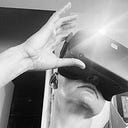VR and AR — A Quick Intro for Brands and Agencies
I’ve been speaking on a ton of panels recently, but realize that not everyone can make it to every conference. Over the course of the next few months, I’m going to release a series of pieces based on my remarks so a wider audience will be able to access them.
This piece is based on comments from a number of events, and encompasses what I’m planning to say on the Advertising Week panel I’ll be on September 28.
Just to set the groundwork — virtual reality and augmented reality are two different things. They are not in competition; anyone who asks “which will win” doesn’t understand what they are talking about. It’s like asking which will win — your toaster or your microwave. While both are kitchen appliances, and both can heat bread, they have pretty different purposes beyond that.
Now, it’s quite likely that at some point in the not too distant future, we will see the rise of “mixed reality,” which will be some sort of hybrid of virtual and augmented reality. But for the short term, the two technologies will likely remain separate, so we’ll focus on what each is best for.
Augmented reality is amazing for information discovery and delivery. At its core, AR is a layer on top of the physical world — it is not meant to be fully immersive, as everyone who narrowly missed getting hit by a bus while playing Pokemon Go last summer quickly learned. It is meant to compliment the world, not take you out of it.
Some of the best AR examples I’ve seen have been the type of absurdly practical things that we’ll look back on in a few years and wonder how we ever lived without them. There’s an AR app that allows you to hover over a menu and see pictures of dishes — great for people who tend to forget their reading glasses, those who have learning disabilities related to reading, and people who don’t speak the language the menu is printed in. Another potential AR use case related to food is the ability to hold up your phone and scan a street to quickly see which restaurants or bars have good reviews, have seats available, etc. A great AR layer on top of an app like Yelp or Foursquare can deliver information much more seamlessly than the endless scrolling and clicking those apps require now, and is better for our collective posture as well.
AR can also be fantastic for shopping and commerce — connected stores will allow users to route a path based on what they need and suggest items related to their uploaded shopping lists. This provides a wealth of data for stores, as well as sponsorship opportunities for brands that want to buy recommendations in the app.
Finally, AR is great for gaming and entertainment — Pokemon Go was only the start when it comes to the possibilities for AR games. This could very well be the next wave of casual gaming, with the bonus that these games get people to move and explore, rather than sitting in one place.
But the one thing all these use cases have in common is that you are still interacting with the real world. Virtual reality, on the other hand, is perfect for immersion — when you want a user to focus entirely on the story or task at hand. By putting someone in a headset, you remove all outside distractions — something that almost no other medium can do. This is why VR shines when it comes to training and educational applications — you can’t glance over at your phone or daydream out the window while you’re in the headset, and eye-tracking technology prevents the user from closing their eyes and zoning out. VR can be used to gamify training and make mundane tasks more fun, which hopefully translates into the real world.
VR can also be used for storytelling, but not just in the traditional entertainment sense. Rather, think of a use case where a developer is selling new houses or condos. Sure, they could just make a 360 walkthrough — but at the end of the day, what makes us want to live in a space isn’t entirely the floor and walls and ceiling. It’s the sense of place and community, and that’s what VR experiences can show us. A good VR experience can allow you to interact with your neighbors and imagine a day in the life of your new home, and convince a potential buyer that the life they want can be found in that place.
The biggest takeaway for any VR piece is that the user must feel some sense of presence. An experience where the user is a fully passive observer is a waste of the medium — if that’s all you want to do, just make a regular video and call it a day. This applies to 360 video as well — while there are limits to what users can do, characters in the piece can still address them directly and make them feel like they are part of the world. Voiceover in VR is almost always a bad idea, because it leaves the viewer feeling disconnected and lost.
There are obviously many more examples of use cases for AR and VR, and if you’re interested in learning more, my agency Friends With Holograms provides both educational and consulting services for brands and advertisers.
